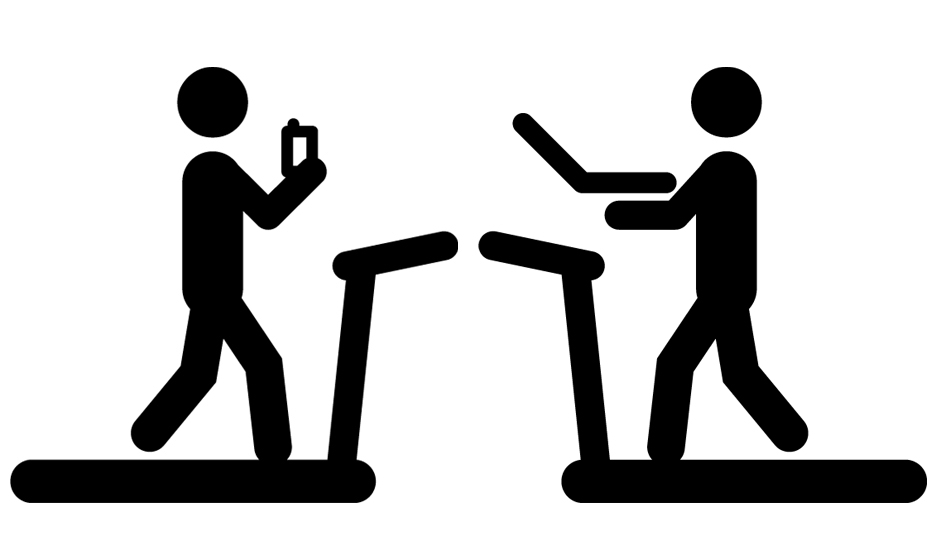You’re Fooling Yourself If You Think Your Treadmill Desk Counts As Exercise

Shutterstock
I know. Treadmill desks seem like a such a great idea. You can happily clack away on your computer while offsetting some of those terrifying side effects of sedentary office life. Heck, I even had a blast when I got to try one out for a few weeks.
But a new study aims to temper at least some of your expectations when it comes to the good your treadmill desk can do for your health. Namely, that it doesn’t provide enough of a workout to, well, count as real-deal workout.
Researchers at Oregon State University recruited 41 overweight and obese people with sedentary desk jobs; 21 of the subjects were given access to treadmill desks, while 20 continued to work at their seated desks. You should note that those in the treadmill-desk group did not use the walking desks at all times during the day; instead, they signed up for time slots to use the desks. Although the company they worked for encouraged them to use the treadmill desks as much as they liked, they each averaged just one 45-minute walking session per day.
After three months, those who used the treadmill desks managed to rack up, on average, about 1,600 more steps every day than the seated office workers. But here’s the catch: They walked too slowly to make any real dent in their fitness or physical health.
Via Live Science:
Those with treadmill desks did not report any significant weight loss or changes in their body mass index after 12 weeks. …On average, the workers in the study walked at about 1.8 miles an hour (2.9 kilometers an hour), a speed that equates to light exercise. There may be some cardiovascular benefits to such light walking, but people need to engage in more intense exercise to reverse the negative health effects of a sedentary lifestyle.
As an interesting side note, the researchers say they had a helluva time recruiting people to participate in this study. Although the company they worked with, a health insurer, had 700 eligible employees, only about 10 percent wanted in, with some willing parties unable to receive approval from their supervisors to participate.
So maybe treadmill desks really are more interesting in theory than they are in practice. Employees might think they’re a good idea, but when push comes to shove, perhaps they view the whole walking-while-working thing as somewhat impractical. It’s something for employers to think about.
Anyway, back to the health outcomes. You could argue that if the subjects had walked more — the researchers apparently encouraged them to use it for about an hour and a half a day, so the subjects only averaged half the recommended walking time — they might have seen better results. Still, it would be hard to make the case that walking 1.8 miles an hour, even for hours on end, is a fair replacement for 30 minutes of hard work at the gym.
The takeaway is this: If you use and love your treadmill desk — I felt that it did give me more energy, especially in the most draggy of afternoons — then by all means continue to walk while you work. Just don’t fall into the mental trap of rationalization, i.e. “Well, I walked all day at the office, so I think I’ll skip my CrossFit session tonight.” Because, well, you’d just be fooling yourself.
Like what you’re reading? Stay in touch with Be Well Philly—here’s how:
- Like Be Well Philly on Facebook
- Follow Be Well Philly on Twitter
- Follow Be Well Philly on Pinterest
- Get the Be Well Philly Newsletter


